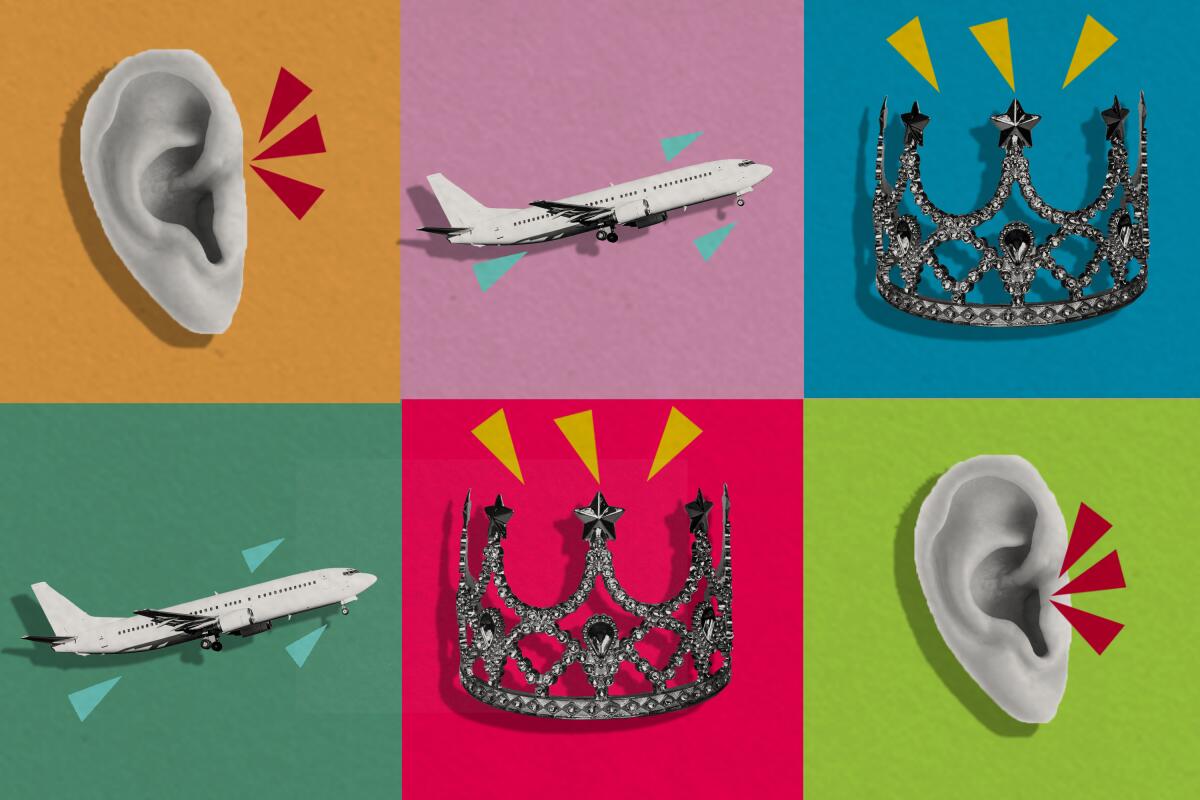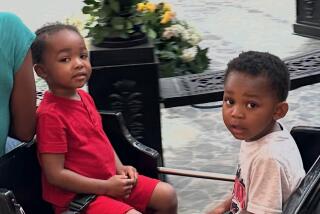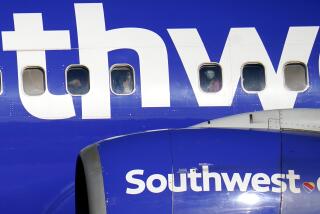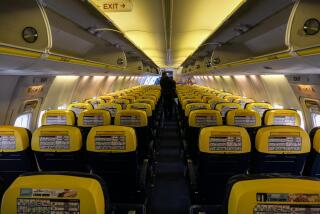Parents need to know: When kids fly solo, flight attendants aren’t baby sitters

- Share via
The two wide-eyed girls, wearing matching grins and pink tutus, boarded the plane as if climbing onto an amusement park ride. The 5-year-old identical twins were traveling without an adult on a 90-minute flight from Miami to Kingston, Jamaica.
The diminutive duo, sporting pink headphones — each with a tiara on top— giggled as they plopped into their seats. “I’m going to Jamaica … I’m going to Jamaica.” They bragged out loud, over and over, in unison, laughing and whooping and laughing again.
But an hour later, as the plane descended toward Kingston’s Norman Manley International Airport, the laughter came to a shrieking halt. Tortured by an unseen enemy, the girls let loose a cacophony of ear-shattering screams, and no one, including me, could help.
Allow me to explain.
The twins were traveling in accordance with the airline’s unaccompanied minor program. For a $150 fee each way on American, Delta, United and JetBlue ($50 on Southwest Airlines), ticketed children can fly without a parent, legal guardian or adult companion. Tens of thousands of kids do so each year. Restrictions vary by airline, but nearly all commercial carriers allow children ages 5 to 17 to fly on their own.
An unaccompanied minor, or U.M., is typically the first to board the aircraft. Escorted by a badged airline employee, the U.M. is turned over to the lead flight attendant, who then introduces the child to members of the cabin crew. Our job is to periodically monitor the U.M. and ensure all is well during the flight.
The U.M. program, however, is not a babysitting service. American Airlines says as much on its website: “Our flight attendants will check on your child as duties allow, but they can’t continuously monitor your child throughout the flight.”
Passenger concerns about traveling during the COVID-19 pandemic meant my Miami-Kingston flight was at 30% capacity. The light load meant I’d be able to give more attention to the gregarious twins.
Part of my job was to give a personal safety briefing. I told them to keep seatbelts buckled and face coverings on and that if they felt uncomfortable in any way — if a passenger made them feel scared or nervous — all they needed to do was press the call button and I’d come running.
“Look at me, I’m a princess,” said one of the girls, pointing to her tiara headphones. “Me too,” said the other. But in 5-year-old parlance, the word sounded like “pwin-cess.”
During the flight, the “pwin-cesses” kept me entertained.
I sat in a passenger seat across the aisle from them and playfully crossed my eyes. My goofy gaze left them in hysterics.
The children flipped through pages of the in-flight magazine, shouting, “Look, look … we’re ‘weading’ the magazines!”
I cracked up when they peered between the seats, eyeing my colleague as he munched on a salad. “We like salad,” they proclaimed.
They were happy, adorable, nonstop chatterboxes. But all that changed when the plane descended. That’s when the twins began to cry.
Tears ran down their chubby cheeks. Both girls looked at me, brown eyes pleading above their surgical masks.
“My ear hurts,” said one twin. “My ear hurts too,” said the other.
Airplane ear. They were no doubt suffering from it.
According to the Mayo Clinic’s website, airplane ear, or ear barotrauma, can occur when a plane is taking off or descending for landing. The rapid change in cabin air pressure causes an imbalance in the eustachian tube — a narrow, inner-ear passage that regulates air pressure. Symptoms range from moderate discomfort to extreme pain.
The twins began to scream — the loud, excruciating, ear-shattering screams that would set any adult on red alert.
I tried coaching the kids through a bevy of approved remedies that can equalize pressure and relieve pain.
I told them to swallow. That didn’t work.
I told them to yawn. That didn’t work either.
I could not offer gum to chew or drinking straws through which they could blow bubbles into water.
Finally, I demonstrated the Valsalva maneuver. This technique requires the sufferer to close her mouth, pinch her nostrils and gently blow, as if blowing her nose, to equalize the pressure between her ears and the airplane cabin.
But the girls were too young and frightened to follow my lead.
The screams intensified.
“We’re almost there,” I said, pointing to treetops flying past the window. “When we get on the ground, it won’t hurt anymore. I promise.”
Before I dashed to my jump seat, where the Federal Aviation Administration mandates flight attendants sit for takeoff and landing, one twin snatched my hand and tried shoving my finger into her ear in an effort to ease the pain.
I pulled away, then rushed to my jump seat, horrified, that in the middle of a global pandemic I had allowed skin-to-skin contact with a child. At the same time, I felt shame for not being able to comfort her. The COVID-19 pandemic puts limits on compassion.
The plane touched down, raced along the runway and rolled to a crawl. I sprang from my jump seat and stood over the two blinking 5-year-olds. The screaming stopped. The tears subsided. Apparently, so did airplane ear.
“Are we in Jamaica?” one of the girls asked.
I nodded.
They threw up their hands as if on a roller coaster and yelled, “Yaaaaay!”
More to Read
Sign up for The Wild
We’ll help you find the best places to hike, bike and run, as well as the perfect silent spots for meditation and yoga.
You may occasionally receive promotional content from the Los Angeles Times.






